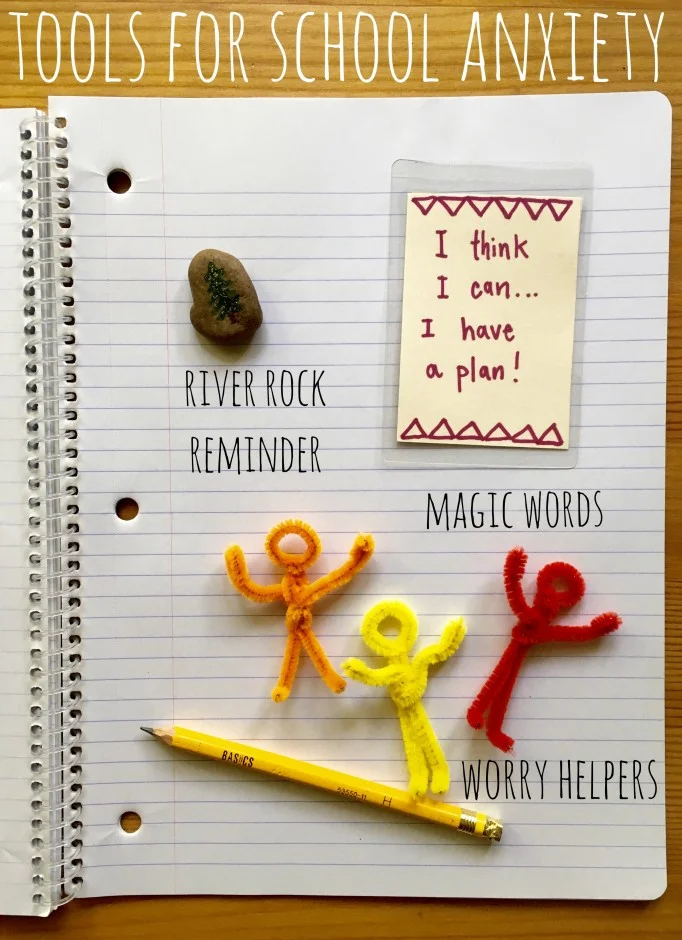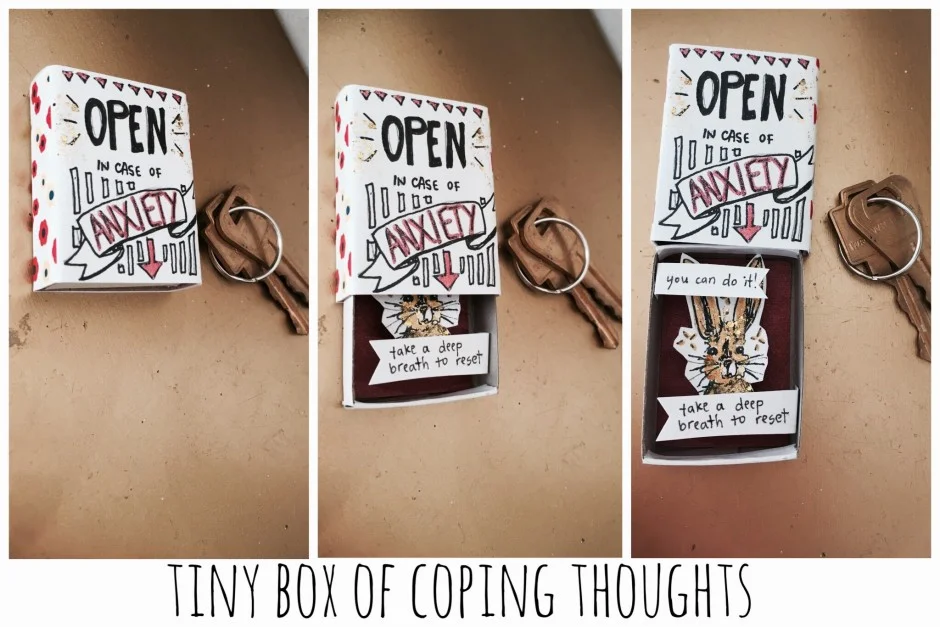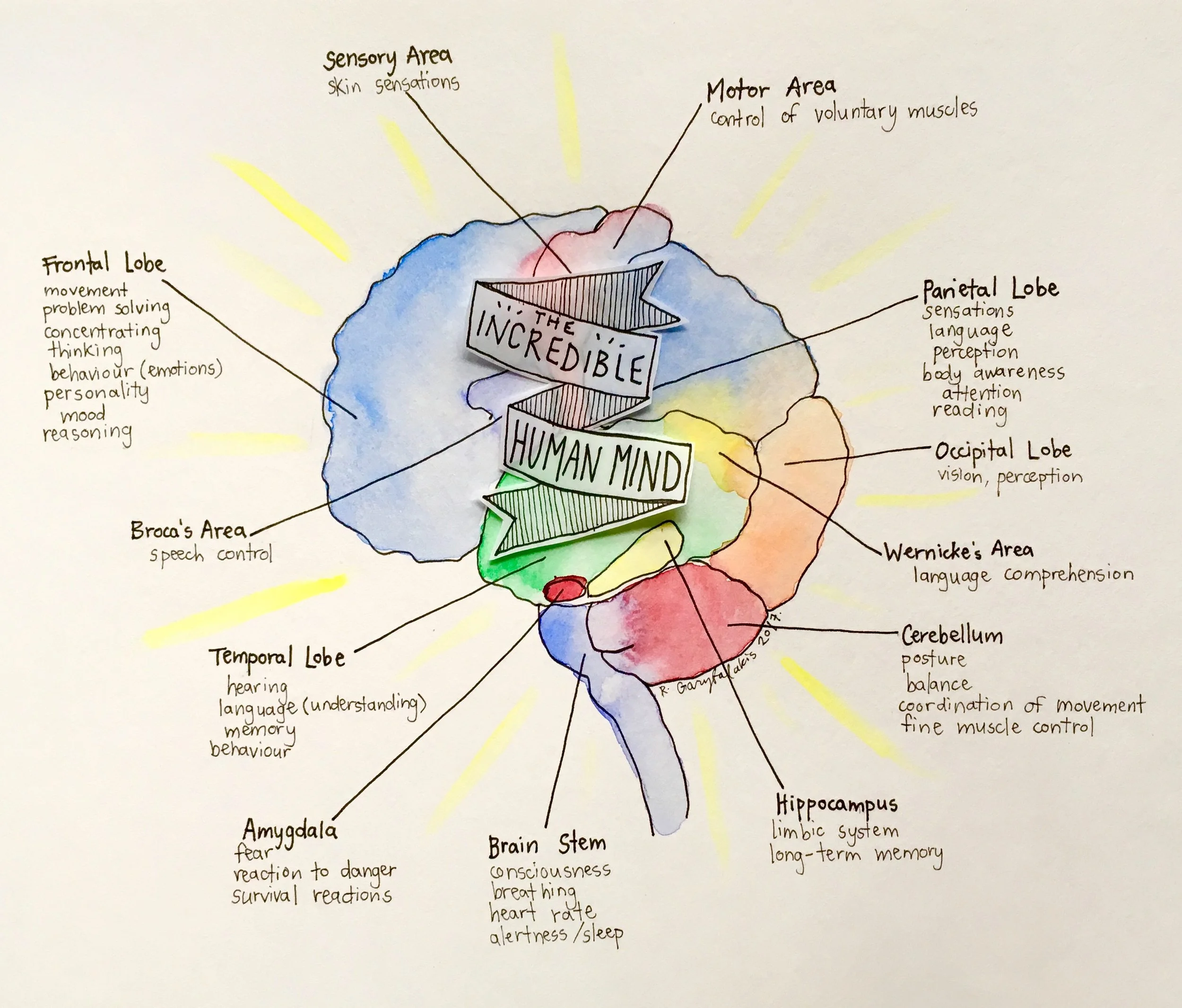For many, September brings a sense of new beginnings and a chance for a fresh start. High school students may see the dawning of a new school year as an opportunity to reinvent themselves socially – to make new friends, to try a new style, or to join a club. While offering many valuable learning opportunities, the social dynamics of high school can bring tremendous pressure and may trigger some anxiety. In our work at Art as Therapy we often find that friendships and social dynamics are a big cause of anxiety as teens head back to school. Teens may worry about how their peers will react to a new hairstyle, or have fears around not knowing anyone in class, or feel anxious that they will not fit in with the desired group.
Creative Strategies for Managing Back to School Anxiety
While the art therapy process allows clients and therapists to create unique and individualized solutions, today we’re sharing some general creative strategies for managing back to school anxiety. First there are three basic tips for parents, followed by three arts-based tools to make together that will equip students for the first day of school.
Five simple tips to support a child experiencing back to school anxiety.
Going back to school after summer’s freedom can be tough for some children, sometimes leading to tears, outbursts, difficulty in transitions and other signs of anxiety. If this has been your experience as a parent or caregiver, that’s okay! Having a level of back to school anxiety is normal for most kids. As a way to support families and children before the school year begins, Art as Therapy will be providing a series on back to school anxiety, starting from some practical tips for caregivers on how to support your child before school starts.
Parenting a Child with Autism
Image created by Sally Chung from the Art as Therapy team
Parenting is hard. Parenting a child with ASD is even harder. Understanding your child, understanding the disorder and understanding how the disorder affects your child will make it easier. In case you need to know where to start, here is a list of the top 5 things parents of kids with ASD should know:
1. They have lagging skills.If you’ve never heard of Ross Greene, you should probably look him up. Dr. Greene has written several books on how to deal with consistently defiant, frustrated, and overwhelmed kids. Otherwise known as “challenging kids”. One of his key points is that “kids do well if they can”. If your child isn’t doing well somewhere it’s because they are lacking the skills to do so – not the motivation. Find out the skills your kid needs to learn (things like, “how to manage frustration” or “how to appropriately go from something fun to something not-so-fun”) and teach them how to do it.
2. Understand their sensory needs.Most kids with ASD struggle with sensory processing and fall somewhere between things being “too much” or “not enough”. Some kids can even be oversensitive and under sensitive simultaneously. What this looks like is a kid who can barely stand to have his hair cut, but doesn’t seem to notice a large cut on his leg. They can experience sensory overload which can lead to challenging behaviour. When you know what bugs them, you’ll be able to anticipate difficult, meltdown-inducing situations.
3. They are often concrete and black and white thinkers.I’m sure you’ve noticed that if you say “we’ll go in one minute”, your child will be watching the clock for the next 60 seconds. It is very hard to manage yourself in a world full of grey areas when you’re black and white. Throw in some rigid thinking and you can see how they often get stuck on seemingly “unimportant” details. Keep in mind these details are VERY important to them and, in fact, these details help them create order in a very disorganized world. Be as specific as you can. Don’t use “in a minute” as a blanket statement for “soon”. Give them an exact number whenever you can and stick to it.
4. You may see Jekyll and Hyde.The school says “we don’t see that behaviour here” but you can’t understand how that’s possible. Your child can be two different people depending on the environment. It often takes a lot of emotional control and energy to “keep it together” at school. Once they get home, all bets are off and the built-up pressure from the day needs to be released. This release will likely come right after you’ve asked her to do a seemingly simple chore like empty her backpack or feed the dog. The time directly after school should be a “no expectation zone”. She needs time to decompress and fully relax. This calming time is a necessary part of her day and will allow for the evening to be more pleasant.
5. Acceptance is the key to success.Your child with ASD has a brain that is wired differently from yours, from their peers, and from their siblings. You can’t expect them to behave, think, and understand things in the same way. You may expect your neurotypical child to sit at the dinner table with Aunt Mildred but your kid with ASD may not be able to do it. Social and sensory challenges get in the way of this. Expecting them to sit there for 5 minutes may be all that you get. This is okay! Accept them for who they are and what they are capable of. Make accommodations and be flexible.
There is one last thing that I wanted to add to this list but “the top 6 things” doesn’t have the same ring to it. However, this may be the most important point, so it’s probably a good thing it has its own paragraph. Spend quality time together and build rapport. This is possibly the single most important thing you can do to make your lives easier. When you share a genuine love, respect, and understanding with your kid, they’ll simply be better behaved. When they feel connected and valued they act in ways that show it. Simultaneously, when they feel isolated and unimportant, they’ll act in ways that show it. Hug them, smile, set aside time to play together, and reinforce their importance and worth over and over again. As a human, when you feel better, you do better. Find some time every day to show your kid how important they are. There is nothing more important than that and there is nothing more important than them.
Guest blog writer Carley Johnson from Kerry's Place Orangeville ON
References
Attwood, Tony. Asperger’s Syndrome: A Guide for Parents and Professionals
Greene, Ross. W. The Explosive Child
Art Therapy & Stop Motion animation workshop with Girls Inc
Art Campers from Girls Inc Halton visited the Milton Art as Therapy office and took part in an introduction to stop-motion led by Jane Kwon (Art Therapist and Animator) & Rapinder Kaur (Art Therapist & Psychotherapist). Learning different ways to tell their story and inspiring others and each other to be Smart Strong and Bold!
What’s the Difference between Art Therapy and an Art Class?
If you’re interested in art therapy or thinking about checking it out, you may be wondering what the difference is between art therapy and an art class. In fact, this is a question we are asked all the time, so we wanted to share some thoughts about it here on our blog.
From our perspective, these are the main differences between art therapy and an art class:
Art as Therapy’s Tips for Reducing the Power Struggle with your Kids
In our work with families, we often speak to parents who are experiencing defiance from their children and find themselves frustrated in a constant power struggle. How do you deal with these difficult moments? Is there a way to step out of the power struggle and instead stand beside your child and empower them in those moments?
Unlocking Inner Power through Positive Thinking: An Art Therapy Example
This month at Art as Therapy we are unlocking our powers of positive thinking through the use of positive affirmations. At Art as Therapy we believe that our thoughts have the power to change how we feel, how we behave, and ultimately what we believe about ourselves.
LET’S TALK about art therapy and mental health: taking care of our minds
At Art as Therapy we are strong believers in the mind-body connection. In other words, the way that we think impacts the way that we feel, and the way that we feel in our physical bodies can impact the way that we think about ourselves and the world.
Reframing Difficult Behaviours: A Fresh Perspective for a New Year
Educational consultant Michael Reist makes the argument that difficult children grow up to be interesting adults. He looks at challenging traits in children and considers how these will serve them as adults. For example, an argumentative child has strong verbal communication skills, is passionate, and is intelligent. A disorganized child is more interested in the big picture, a stubborn child is able to set goals and work towards them, a child who doesn’t listen is able to tune out distractions and focus on a single task, and a defiant child is confident enough to stand up to authority figures. These are traits we often encourage or even try to develop in adolescents and young adults.











